How to take incredible black and white portraits? Black and white portrait photography is much more than just converting a beautiful color image into b&w.
Black and white portraits are excellent for capturing emotions and expressions of the subject. Expressions seem more profound, and the whole picture becomes more storytelling.
The world of photography is full of vibrant colors and HDR effects. When we choose to showcase the subjects in monochrome, it gives the picture a classic and timeless look. Whether you are taking a female studio portrait or a spontaneous street portrait, the picture will have that timeless feel.
In this article, we will explore inspiration sources, lighting techniques, composition & posing, and discuss tips and ideas for taking outstanding black and white portraits.
This post may include affiliate links. Please read our disclosure policy. [047]
Camera: Canon EOS 5DS R | Lens: Canon EF 85mm f1.2L II USM
f/2.5, 1/800s, ISO 50 | Photo by © Sergey Bidun
Light: Profoto B1 500 AirTTL System
BLACK AND WHITE PORTRAIT INSPIRATION SOURCES
Many artists draw inspiration from seeing and examining the work of other black and white photographers. Photographers are very visual people by nature, and we notice things that others might have ignored.
Each photo session requires proper preparation from the photographer, starting from ideas & inspirations and down to camera gear. You can read more about how I prepare for portrait photoshoots in photography time management article.
ANALYZE B&W PORTRAIT PHOTOGRAPHERS
If you are new to black and white photography, I suggest you spend time studying the work of successful b&w portrait photographers. You will be amazed by how many details you will start seeing in monochrome portraits once you start analyzing them.
It’s important to study not just portrait photographers, but also architecture and landscape photographers. This will help you to start seeing the composition of black and white portraits.
Light and shadows are much more vivid in b&w pictures. Pay attention to what grabs your attention the most, and what you are most drawn to. Doing so will give you ideas for taking striking black and white portraits.
Here is a short list of photographers that inspire me in black and white photography. There are many more talented photographers, so pick the style that you like the most and draw your inspiration from them.
Ansel Adams – b&w landscape photographer
Paul Strand – portrait photographer
Robert Doisneau – street photographer
Robert Capa – war photographer and photojournalist
Albert Watson – celebrity and art photographer
Irving Penn – portrait and fashion photographer
Andrew Prokos – architecture photographer
Use these talented photographers as inspirations and ideas, but don’t merely copy them. Create your own photography style.
Robert Doisneau Street Photographer Portfolio
GET INSPIRATION FROM BLACK AND WHITE MOVIES
Did you know that a lot of photographers and artists draw their inspiration from classic old movies and films? Whether it’s the composition of the frame or the type of lighting – there’s a lot you can learn from classic movies.
Watching and studying classic films has a lot of advantages for beginner photographers. You will see how professional cinematographers compose the frame and create a world full of emotion and drama without any color.
At times, I like to pause the movie and think about what the light source for that frame may be, and how I can recreate that.
For black and white portrait photography, it’s essential to watch b&w classic movies. You will learn how to grab the viewer’s attention in a scene by using light and contrast. A lot of emotions and expressions can be conveyed with the proper use of light.
CREATE A MOOD BOARD
Once you have some ideas and inspirations together, it’s a good idea to combine them into a mood board.
It’s convenient to create a mood board on Pinterest, where you would save all inspiration images and ideas into a specific folder. Pinterest boards are easy to access at any time through your smartphone, which is always with you.
Another great platform for creating a mood board is Instagram. Instagram is a popular app for photographers, and you can get a lot of inspiration for b&w photography there. You can easily create a mood board on Instagram with your favorite images that you find on this app.
PHOTOSHOOT TIME
Before the photoshoot, plan out your camera settings, lighting, model posing, and the location. The more you prepare before the photoshoot, the better outcome you can expect from the session.
Photoshoot time for black and white portraits has some unique differences. You have to come into the photoshoot knowing you are photographing in monochrome.
You will have to try to envision the scene in b&w tones, instead of color. This is something that might take some time to get used to, but I promise you, it will get easier with each shot.
Here are a few tips that will help you to achieve more striking black and white portraits.
• SHOOT IN RAW
Always shoot in RAW when aiming for black and white portraits. Raw files have full-color information and will produce the best monochrome conversions. Shooting in RAW will make it easier to edit shadows and highlights in your portraits.
Camera: Canon EOS 5DS R | Lens: Canon EF 85mm f1.2L II USM
f/1.4, 1/2500s, ISO 640 | Photo by © Sergey Bidun
Light: Profoto B1 500 AirTTL System
• LOOK FOR UNIQUE BACKDROPS
Look for unique backdrops and locations when photographing black and white portraits. Always keep in mind that you are shooting a b&w picture and background matters.
Simple backdrops help to highlight the subject of the photo by adding drama and depth. I always prefer simpler backdrops over the busy ones for my portrait photography.
Patterns and textures can add a unique feel to your black and white portraits as well. It all depends on the photographer’s vision for his shot.
Look for backdrops that will complement your subject’s poses and enhance the composition of the image.
Camera: Canon EOS 5DS R |Lens: Canon EF 85mm f1.2L II USM
Sky Natural Light | f/1.2, 1/200s, ISO 800 | Photo by © Sergey Bidun
LIGHTING SETUP FOR BLACK AND WHITE PORTRAITS
I think we will all agree that the thing that attracts us to black and white portraits the most is the shadows and highlights. It’s impossible to see that without proper lighting and posing abilities.
Let’s discuss some general lighting setup techniques for portrait photography. These setups can be used for both studio and outdoor portrait photography.
REMBRANDT
Rembrandt lighting is one of the classic lighting setups that you can use to add attention to your black and white portraiture. This is a portrait-lighting technique where a small inverted triangle of light is visible under the subject’s eye.
The light must be positioned at a certain angle to create this particular shadow and highlight on the subject’s face.
This lighting beautifully suits both male and female portraits. Be creative and soften the contrast with a fill light for a unique perspective.
Camera: Canon EOS 5DS R | Lens: Canon EF 50mm f/1.2 L USM Lens
f/10.0, 1/200s, ISO 200 | Photo by © Sergey Bidun
Light: Profoto B1 500 AirTTL System
BUTTERFLY
Butterfly lighting is one of the most flattering light settings for women portraits. This lighting highlights the main facial features and adds a beautiful butterfly-shaped shadow under the subject’s nose.
This lighting is easy to set up with natural light or studio light. Position your light source directly in front of the model and slightly above. This will create the needed effect.
Camera: Canon EOS 5DS R | Lens: Canon EF 85mm f1.2L II USM
f/10.0, 1/200s, ISO 160 | Photo by © Sergey Bidun
Light: Profoto B1 500 AirTTL System
SPLIT
Split lighting pattern is the most dramatic one from them all. As the light source is at a 90˚ angle to the subject – it’s as if it splits the face vertically into two equal parts.
One side of the face is highlighted by a light source, while the other one is darker.
This lighting is mostly used in male and fashion photography, and something that would look incredible in black and white portrait.
Camera: Canon EOS 5DS R |Lens: Canon EF 85mm f1.2L II USM
Window Light | f/1.4, 1/800s, ISO 200 | Photo by © Sergey Bidun
LIGHT SOURCES
You can use a variety of light sources for black and white portrait photography. Depending on the strength and intensity of light, you will see some differences in shadows and highlights.
• DIRECT SUNLIGHT
Direct sunlight is the most available light in photography. Whether it’s harsh midday sun or soft sunset light – you choose how strong of a light source you want for the shot. Personally, I like dramatic light and shadows of the harsh direct sunlight.
Direct sunlight is often used in fashion photography. Fashion portraits look extraordinary in dramatic monochrome.
Camera: Canon EOS 5DS R |Lens: Canon EF 85mm f1.2L II USM
Ligh: Direct Sun Light | f/2.2, 1/1000s, ISO 125 | Photo by © Sergey Bidun
• STUDIO LIGHTING
If you have studio light, definitely use it for b&w portraits. The biggest benefit of working with strobe light is that you can completely control the light. Adjust the intensity of your studio light to clearly see highlights and shadows.
It’s a great idea to practice different lighting setups with the strobe light. Practice setting up Rembrandt, Butterfly, or Split lighting.
Camera: Canon EOS 5DS R |Lens: Canon EF 85mm f1.2L II USM
Window Light | f/2.0, 1/1000s, ISO 640 | Photo by © Sergey Bidun
• NIGHT STREET LIGHT
Another type of light source you might use is the night street light. If you were out on a photoshoot and the sun has set down, but you are still shooting portraits – consider using street lights.
Street lights are a strong light source and can add an interesting element to your b&w photography. You can use light from the street windows, or illuminated signs – anything that can help add light to your portrait.
Camera: Canon EOS 5DS R |Lens: Canon EF 85mm f1.2L II USM
Night Street Light | f/1.6, 1/200s, ISO 500 | Photo by © Sergey Bidun
SIMPLE COMPOSITION
The composition is very important in portrait photography. If the image lacks in composition, it’s very hard to grab the viewer’s attention.
In black and white portrait photography, it’s crucial to stick to pleasant backgrounds and simple composition. Always remember that subject is the center of attention, and compose your frame with that in mind.
Camera: Canon EOS 5DS R | Lens: Canon EF70-200mm f/2.8L IS II USM
Back Sun Light | f/2.8, 1/320s, ISO 640 | Photo by © Sergey Bidun
CAPTURE EMOTIONS AND EXPRESSIONS
Black and white portraits are ideal for capturing emotions and expressions. If you put a color and b&w portraits side by side, the monochrome one will most definitely draw to you with its emotions.
When the viewer is not distracted with colors and tones, their eye is immediately drawn to seeing the facial expressions of the subject.
I think everyone will agree that portraits with no emotions or expressions will be not interesting for viewing. Every photographer must be able to get their subject to relax in front of camera and be their true self.
Camera: Canon EOS 5DS R |Lens: Canon EF 85mm f1.2L II USM
Window Light | f/3.5, 1/200s, ISO 500 | Photo by © Sergey Bidun
HIGHLIGHT THE EYES
What’s the first thing you look at in a portrait? For many people it’s the eyes. It’s natural for us to look into the subject’s eyes when admiring a portrait.
In black and white photography, when colors are limited, the viewer’s gaze will be automatically drawn to the eyes. Make sure the eyes are in focus as they are the highlight of the portrait.
Camera: Canon EOS 5DS R |Lens: Canon EF 85mm f1.2L II USM
Window Light | f/2.2, 1/250s, ISO 500 | Photo by © Sergey Bidun
PHOTOGRAPHY GENRES FOR B&W PICTURES
There are quite a few photographers who shoot primarily on film and produce museum-quality artwork. We get inspiration from the earliest b&w portrait photographers when studying their portraits.
Let’s look into some of the most common genres of black and white portrait photography.
• STREET PORTRAIT PHOTOGRAPHY
Street portrait photography is one of the oldest genres of photography. There’s something special when you look through b&w images of strangers on the streets. I bet this genre will never go out of style.
• CLASSIC BLACK AND WHITE PORTRAITS
Classic black and white portraits bring us back in time and force to imagine how life was back then. Probably all of us have held a classic film portrait of our parent or grandparent and admired how good of a quality that image is.
Classic b&w portraits are special and unique, and they are great portraits for anyone to have.
Camera: Canon EOS 5DS R | Lens: Canon EF 85mm f1.2L II USM
f/2.5, 1/125s, ISO 160 | Photo by © Sergey Bidun
Light: Profoto B1 500 AirTTL System
• BLACK AND WHITE MEN PORTRAITS
Men portraits in black and white are known to highlight their features and masculinity. With pronounced cheekbones and expressions, these male portraits make great headshots or acting shots. Shadows and highlights are a must for creative men headshots.
Camera: Canon EOS 5DS R | Lens: Canon EF 24-70mm f/2.8L II USM
f /7.1, 1/200s, ISO 200 | Photo by © Sergey Bidun
Light: Profoto B1 500 AirTTL System
• BLACK AND WHITE WOMEN PORTRAITS
Some photographers specialize in strictly black and white women portraits. These can be either women fashion, glamour portraits, fine art female portraits, or even some other genre of photography.
If this is something that interests you, give b&w women portrait photography a try.
Camera: Canon EOS 5DS R | Lens: Canon EF 50mm f/1.2 L USM Lens
Window Light | f/1.8, 1/640s, ISO 320 | Photo by © Sergey Bidun
• BLACK AND WHITE CHILDREN PORTRAITS
Black and white children portraits are classic and timeless. Every parent would want to remember their child this way, and it’s a great memory.
Fine art children portraits look especially good in black and white. Their eyes and expressions are so special to capture with a camera.
Camera: Canon EOS 5DS R | Lens: Canon EF70-200mm f/2.8L IS II USM
Back Sun Light | f/2.8, 1/250s, ISO 1250 | Photo by © Sergey Bidun
POST PROCESSING TECHNIQUES
The main goal in photography is to get the shot right during the photo shoot, and not try to fix it with post-processing. Post-processing should be adjusting colors and tones and not heavy editing.
The first thing I do is adjust the exposure of the image, and then convert it to black and white. Working in Adobe Lightroom, I use a tone curve to make blacks and shadows of the portrait deeper. Use your eye judgment to determine how contrasty you want the picture to be.
For a regular street portrait, this may be enough of post-processing. If you are working with a classical portrait for a client, you will have to go a few more steps.
After general color-correction, I open up the image in Photoshop to remove all blemishes and even out any skin discolorations. Then I use dodge and burn to make the portrait pop more.
• ADD GRAIN TO BLACK AND WHITE PORTRAITS
If you want to get creative with your black and white portrait, add some grain for a more authentic look. Have some fun and experiment. You might come out with something unique that will turn out to be your signature style.
Camera: Canon EOS 5DS R |Lens: Canon EF 85mm f1.2L II USM
Window Light | f/1.8, 1/400s, ISO 320 | Photo by © Sergey Bidun
• CONVERT OLD PICTURES INTO BLACK AND WHITE
You don’t necessarily have to go out on a new photoshoot to get a black and white portrait. If you have some images on your computer that you think will look great in b&w, go ahead and convert them.
Practice converting different images into black and white, and seeing what works and what doesn’t. Then the next time you go on the photoshoot, you will have a clear idea of what to look out for.
Camera: Canon EOS 5DS R | Lens: Canon EF70-200mm f/2.8L IS II USM
Back Sun Light | f/2.8, 1/200s, ISO 100 | Photo by © Sergey Bidun
PRINT YOUR BLACK AND WHITE PORTRAITS
Do you print your portraits? Not that many photographers do, and that’s very unfortunate. Seeing your image in print is just an extraordinary feeling. I suggest you to start printing your photography work, at least your very favorite images.
Imagine holding your printed black and white portrait, and seeing all the little details of the shot. That’s really special. Make a printed portfolio of your favorite black and white images, and it will be an incredible keepsake.
CONCLUSION
Producing a striking black and white portrait is not that difficult – it’s something that comes with experience. With each photoshoot, you will gain confidence and knowledge for what works best in a portrait.
Use our lighting tips and simple compositions, and you will start achieving stunning b&w portraits in no time. Don’t be discouraged if your images are coming out differently than you anticipated. Refresh your ideas and inspirations and keep shooting.
I hope this article inspired you to try yourself in black and white portrait photography!
FOR SACRAMENTO PORTRAIT PHOTOGRAPHY INQUIRIES, CONTACT HERE.
IF YOU FOUND THIS POST HELPFUL AND INFORMATIVE PLEASE SHARE IN YOUR SOCIAL MEDIA.
Photographer: Sergey Bidun
Written by Maria Bidun

![Black and White Portrait Photography [Ultimate Guide]](https://bidunart.com/wp-content/uploads/2020/04/Portrait183a-1280x640.jpg)
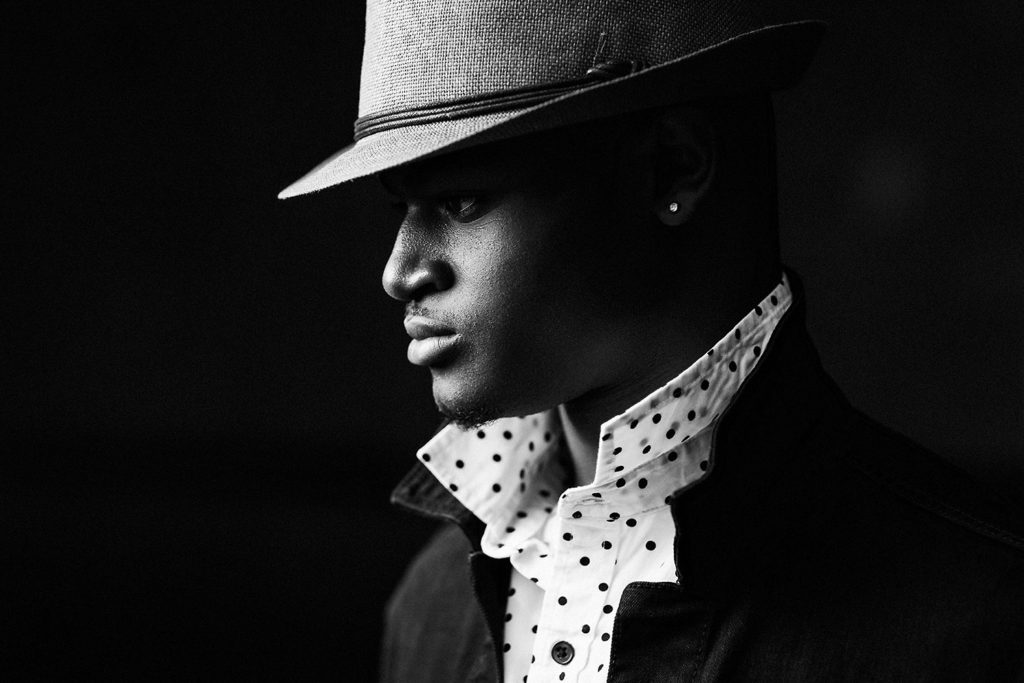
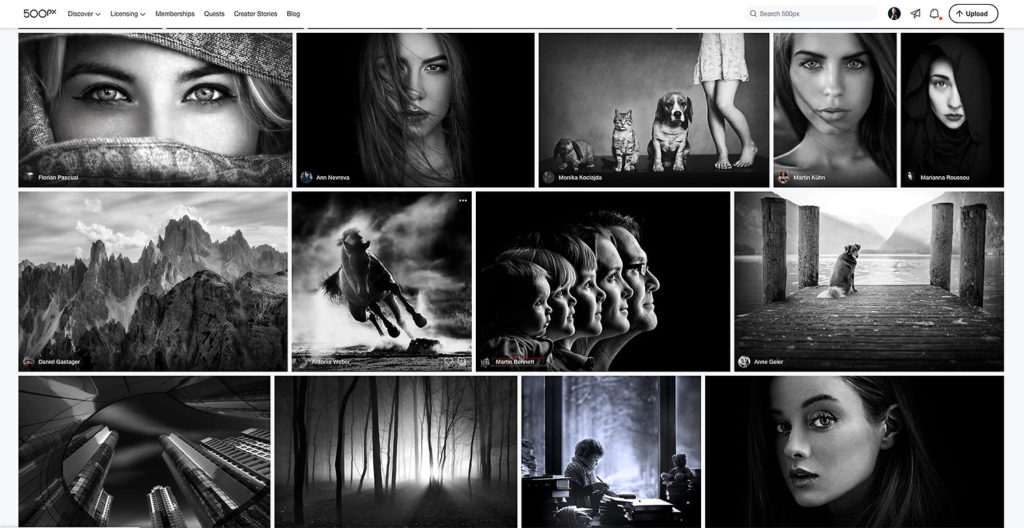
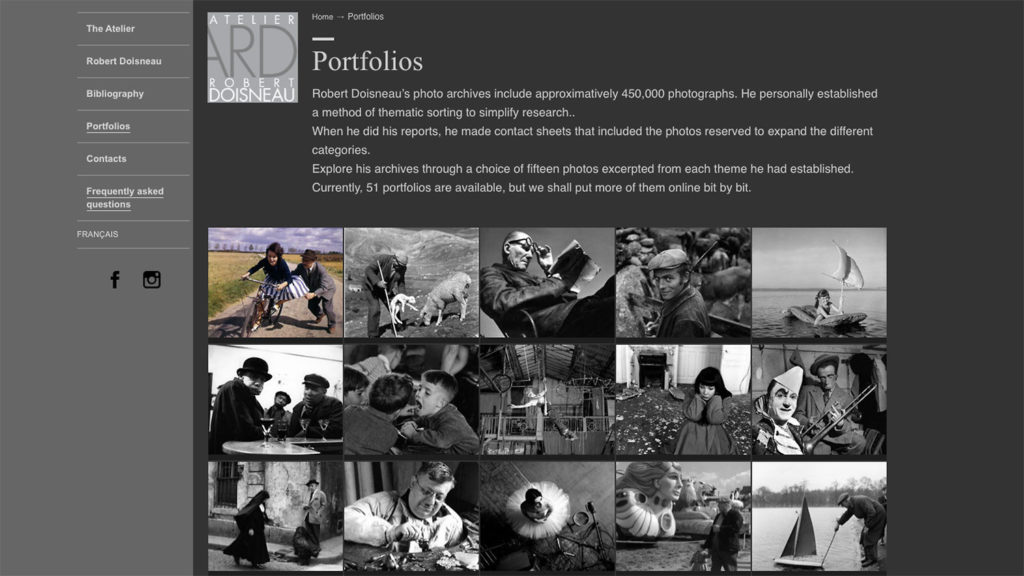
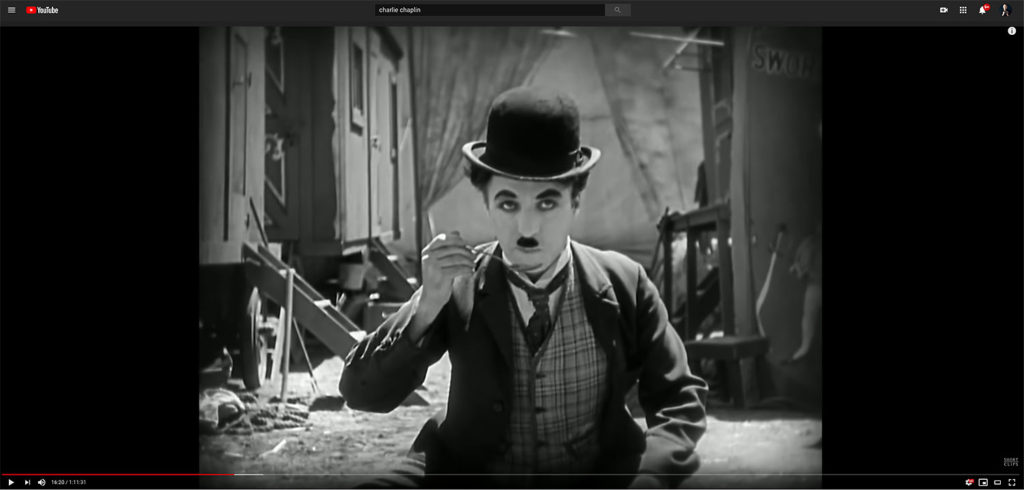
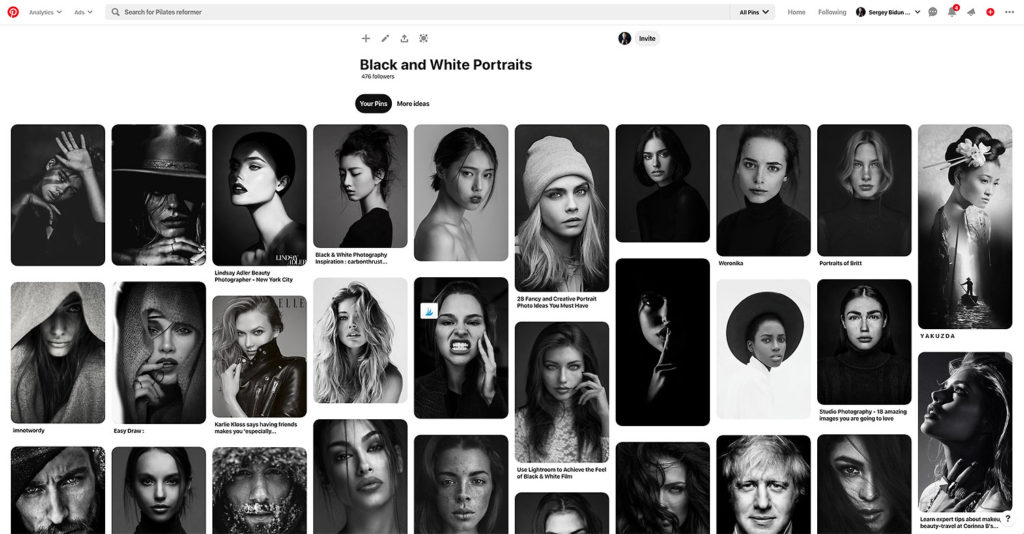
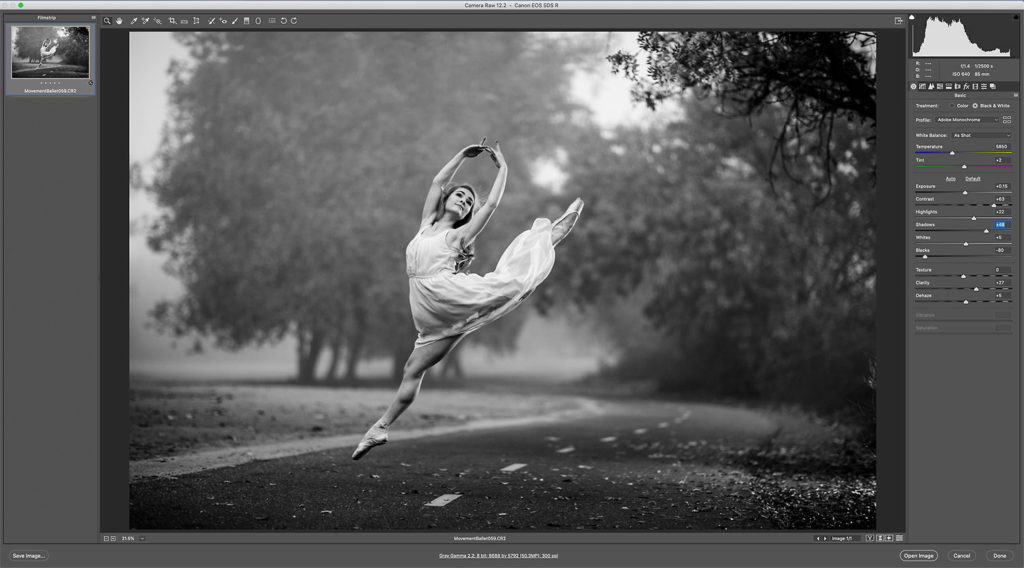
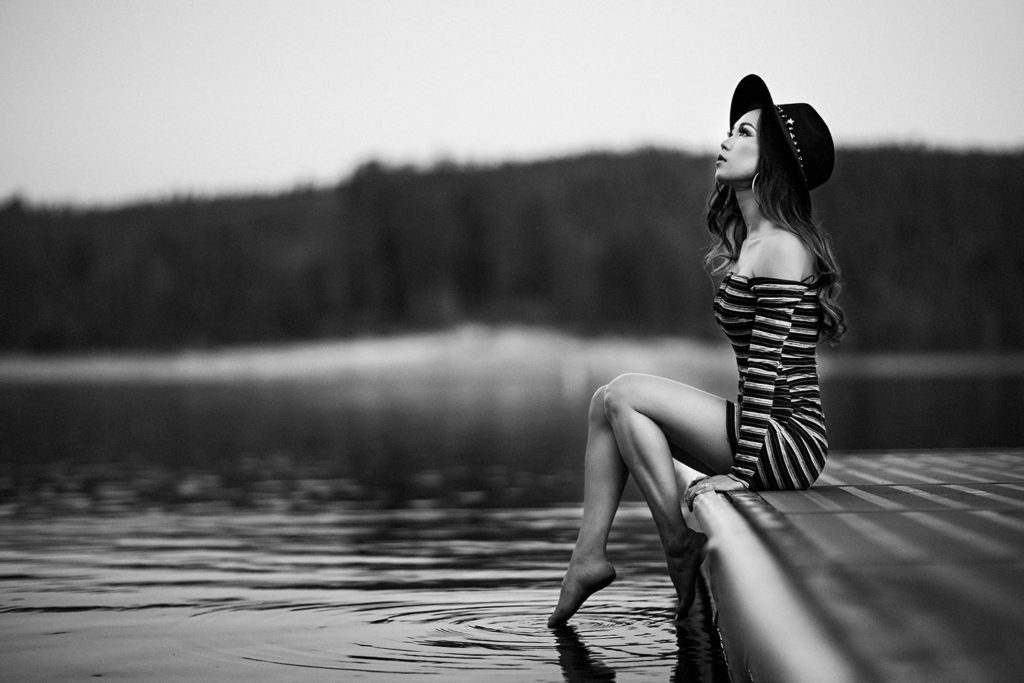
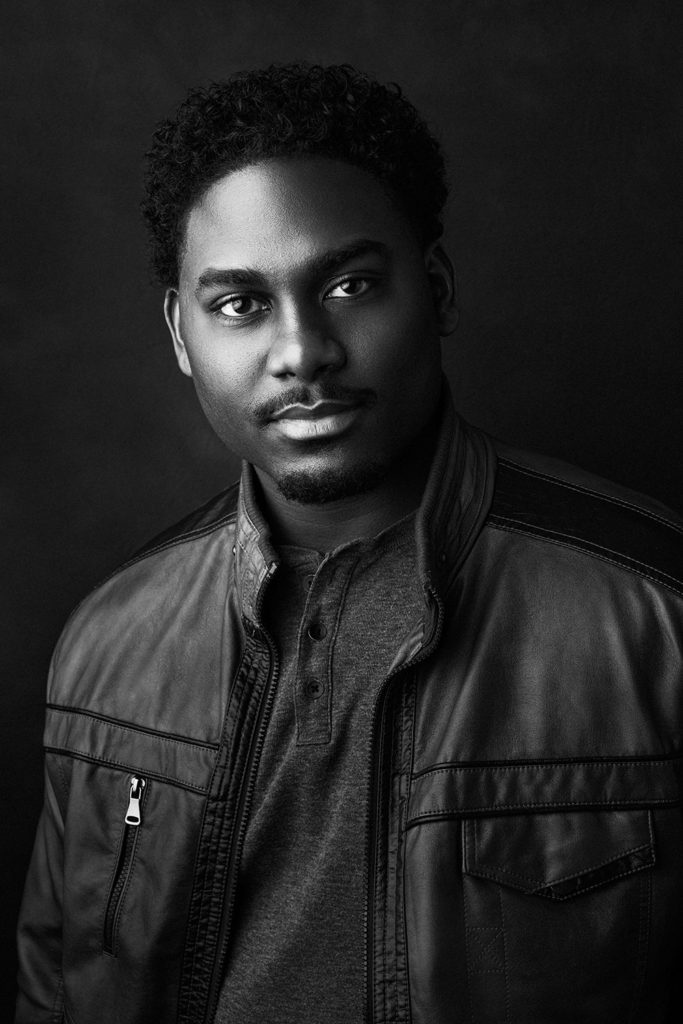

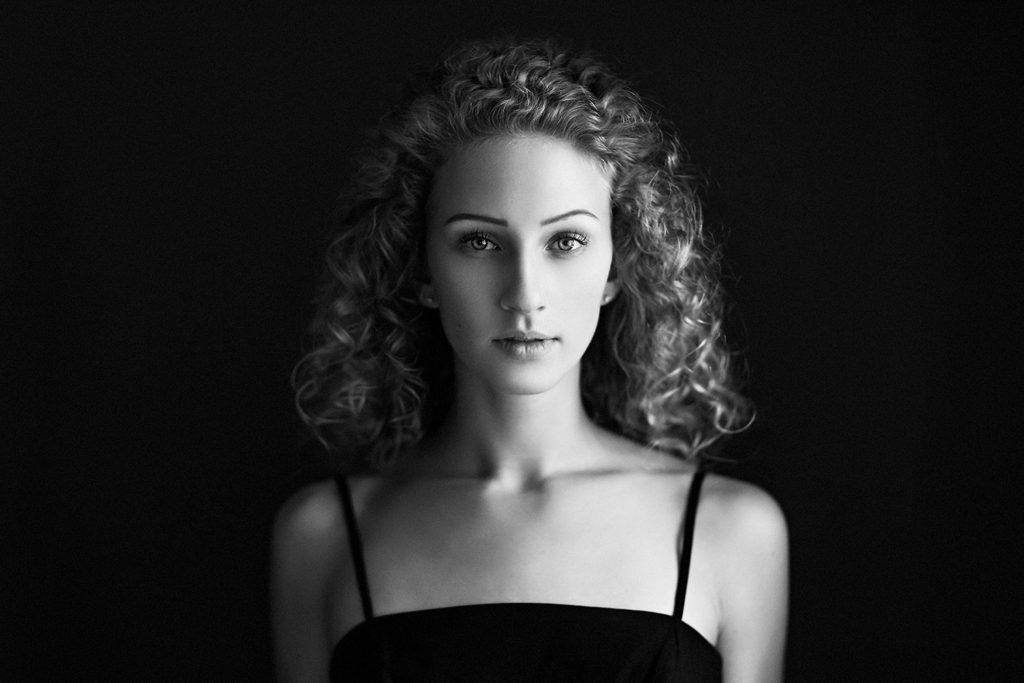
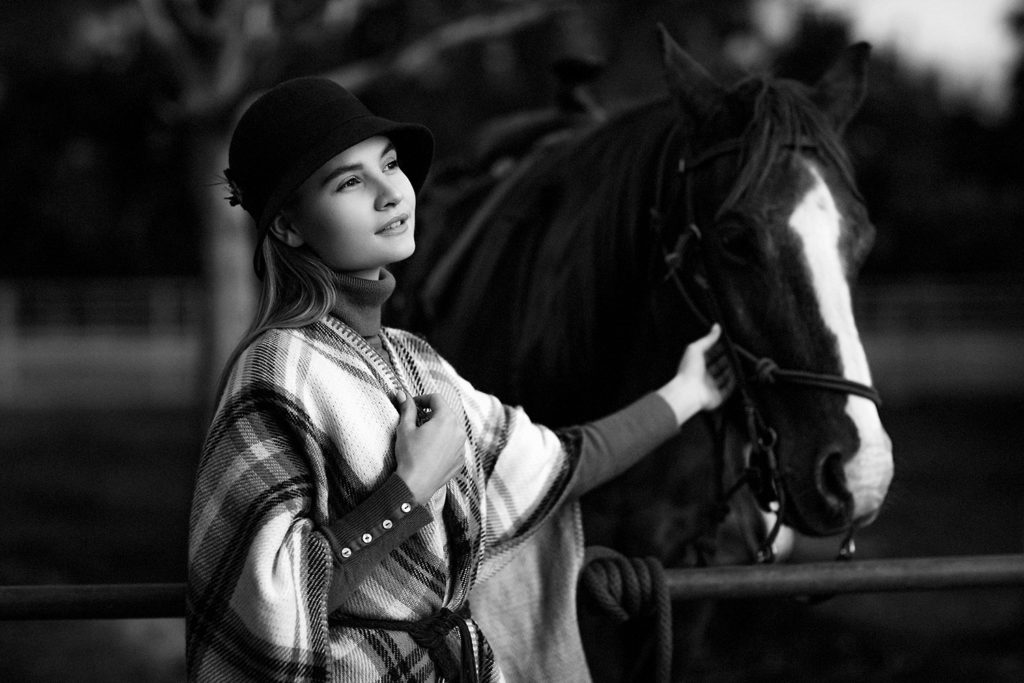
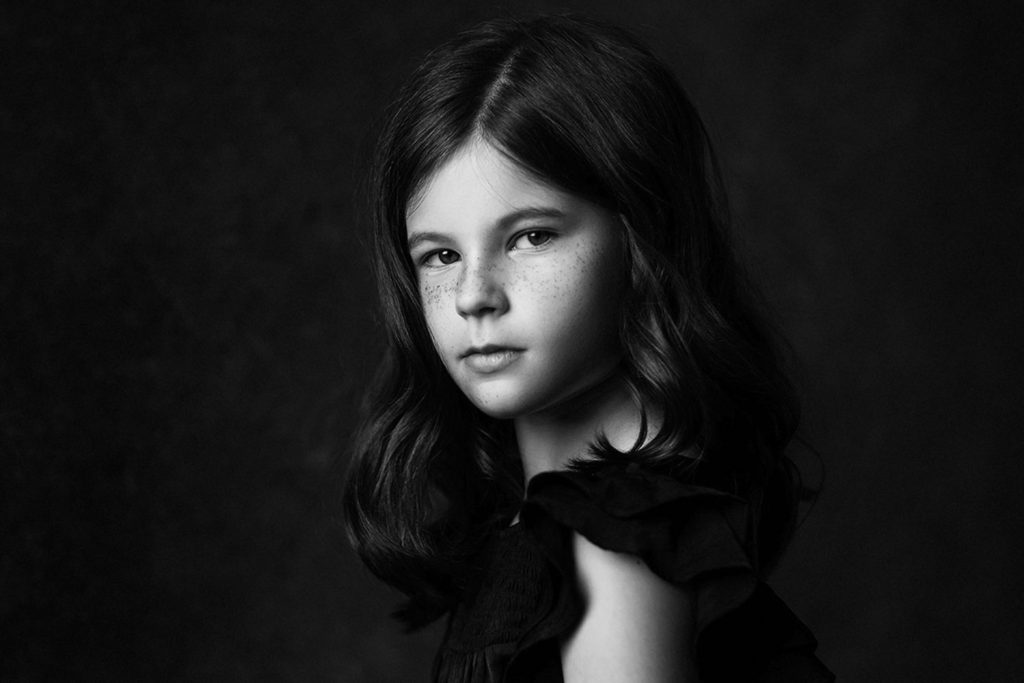
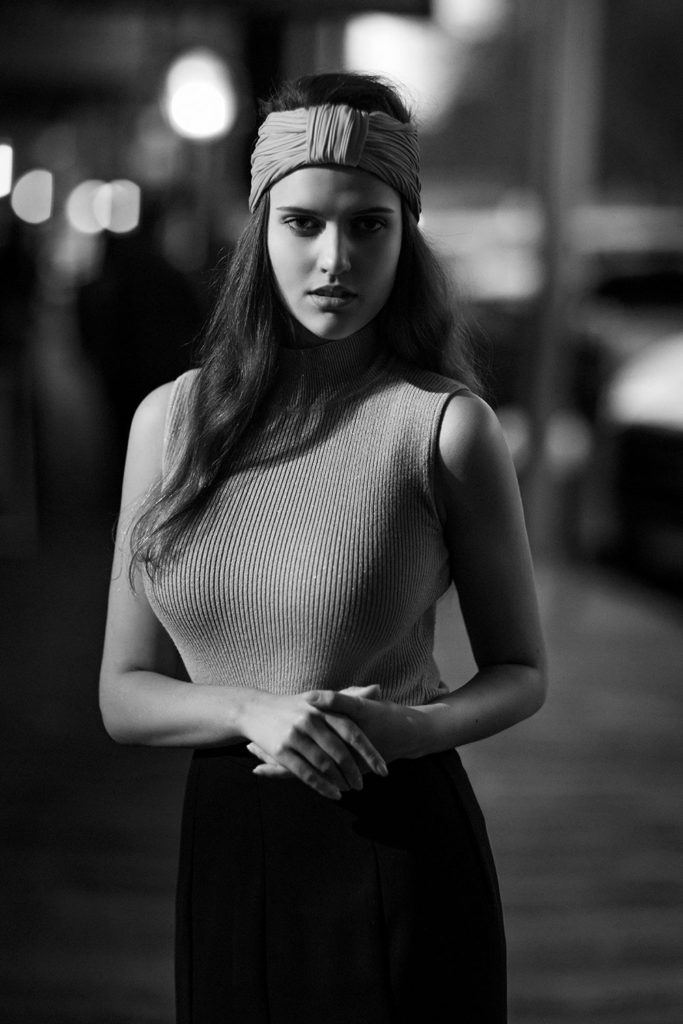
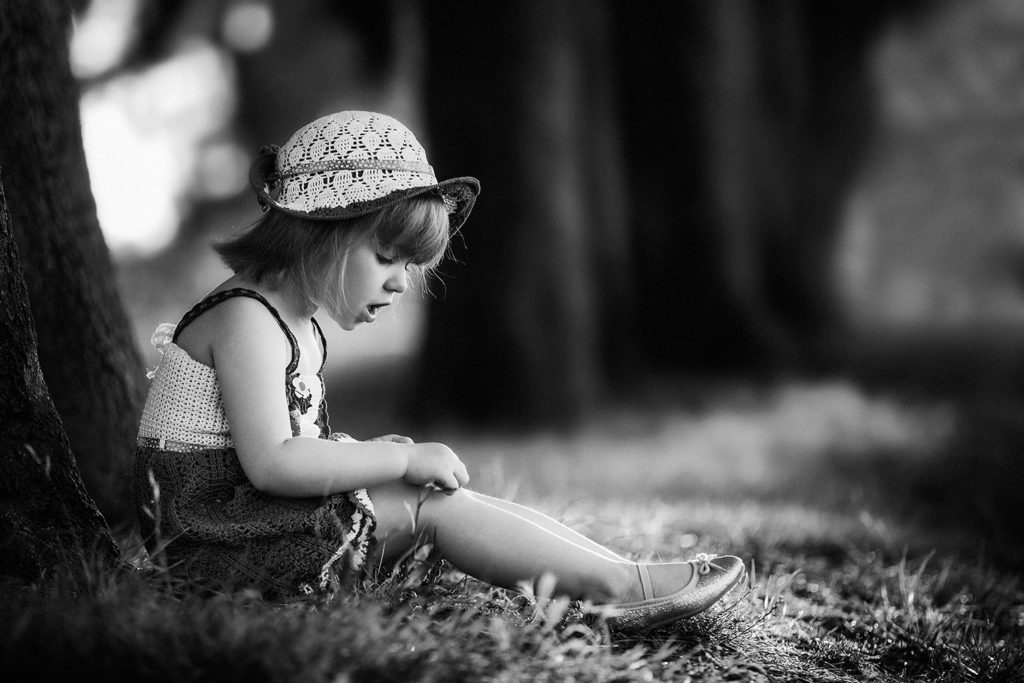
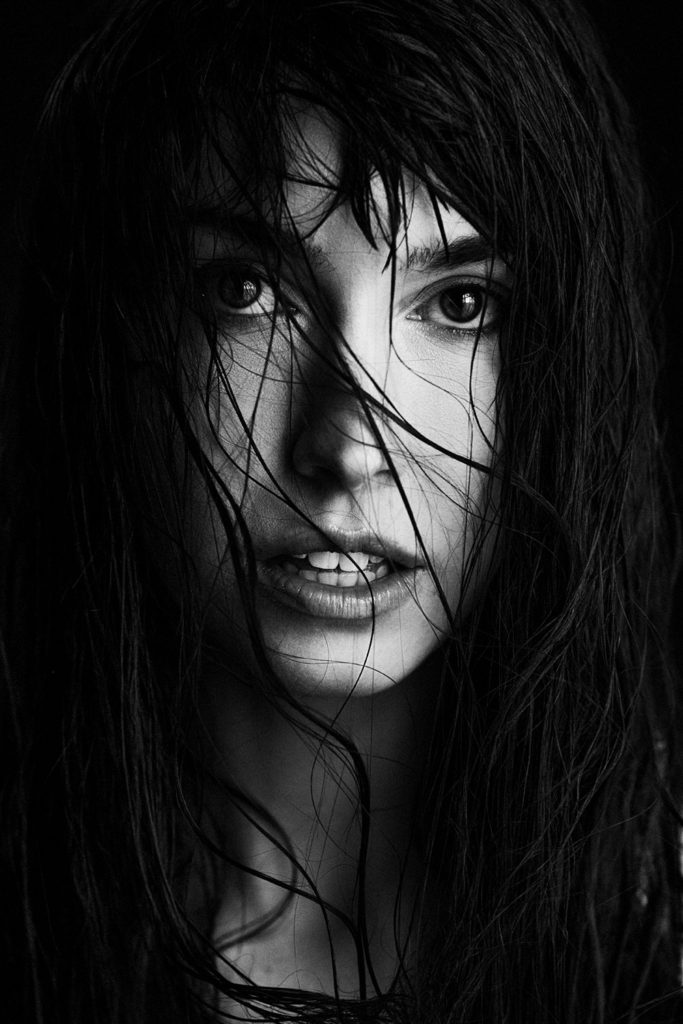
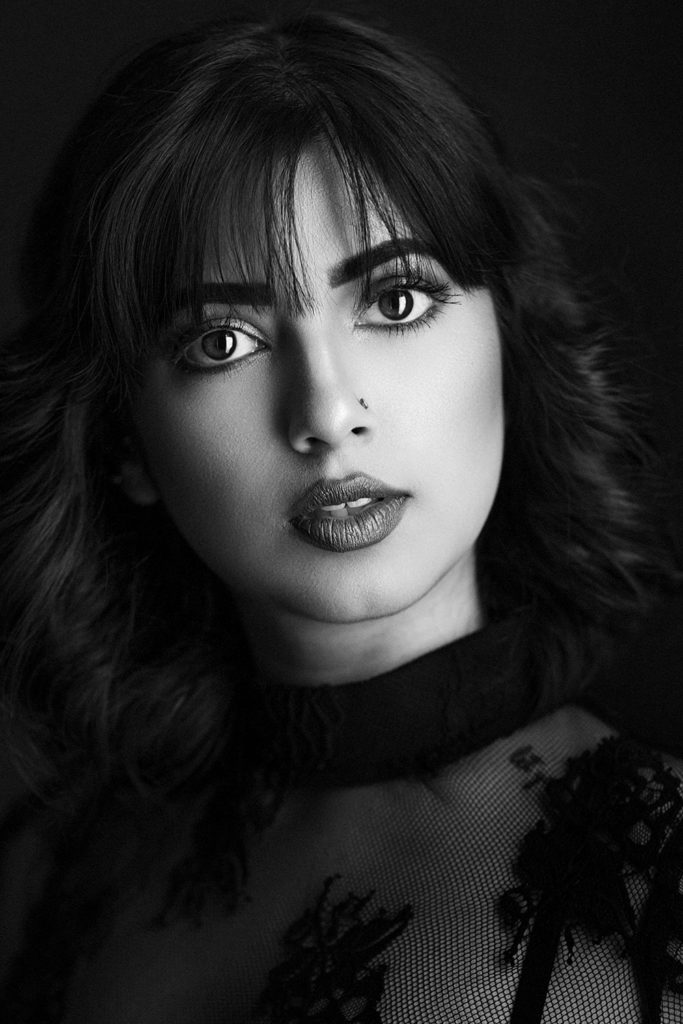
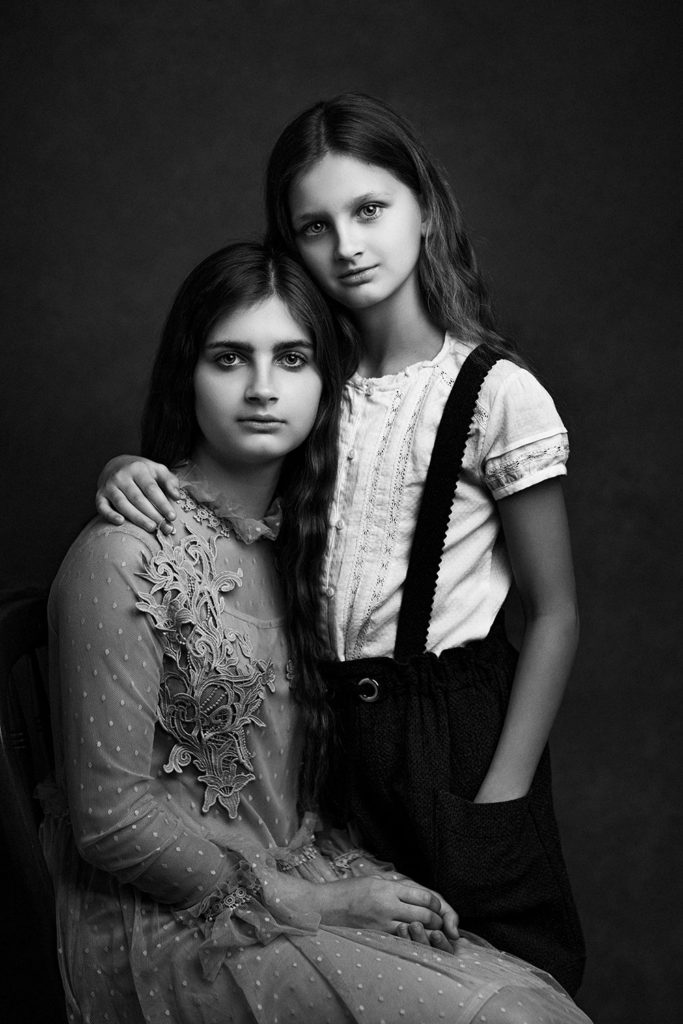
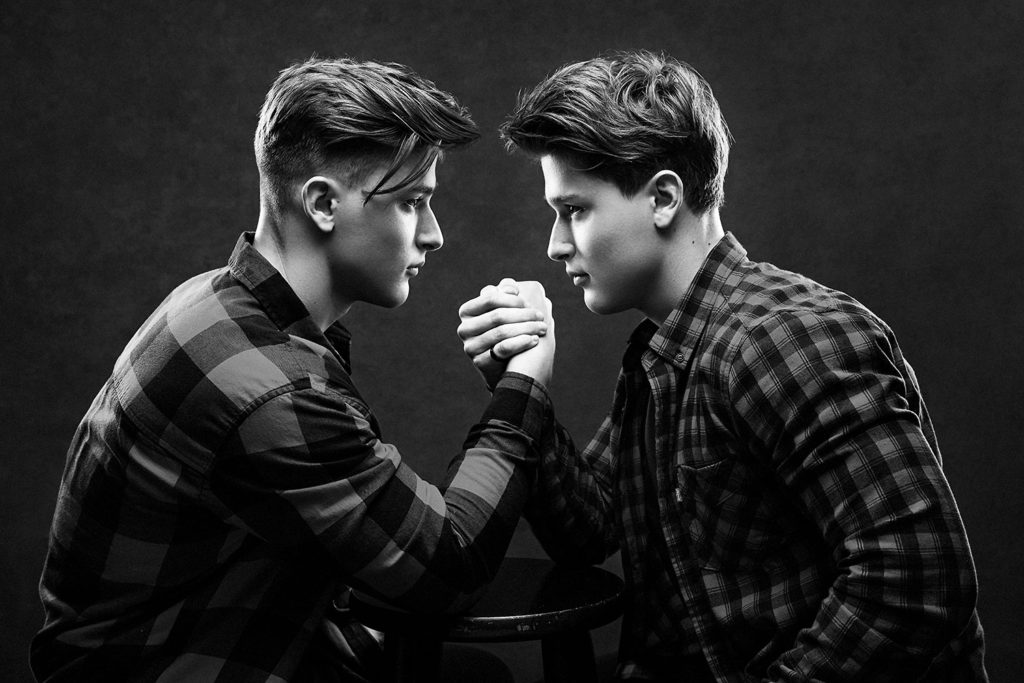
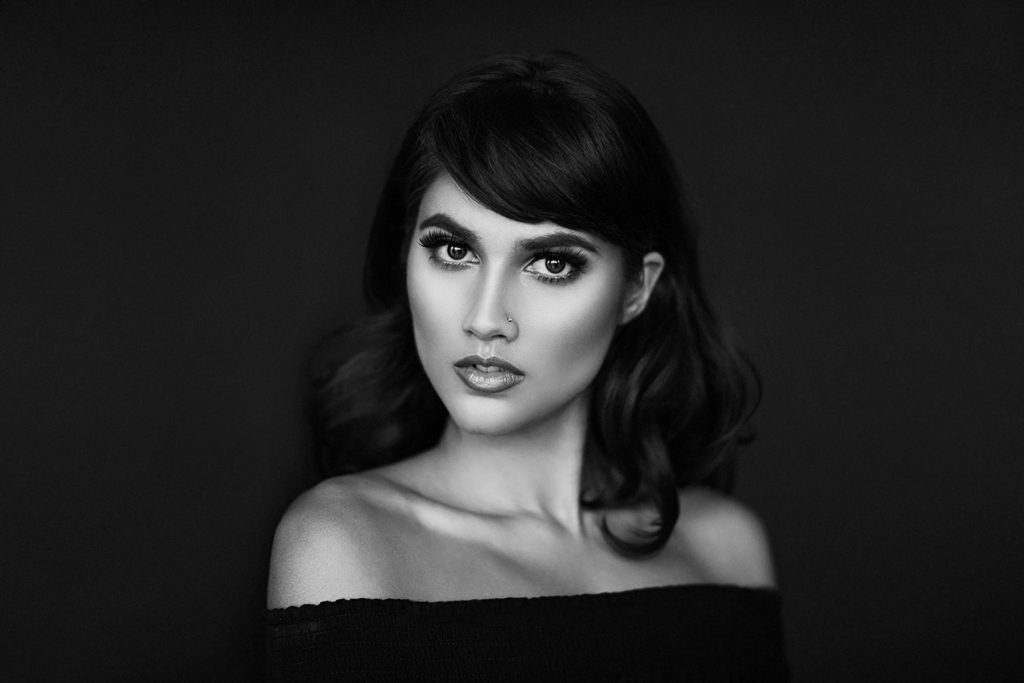
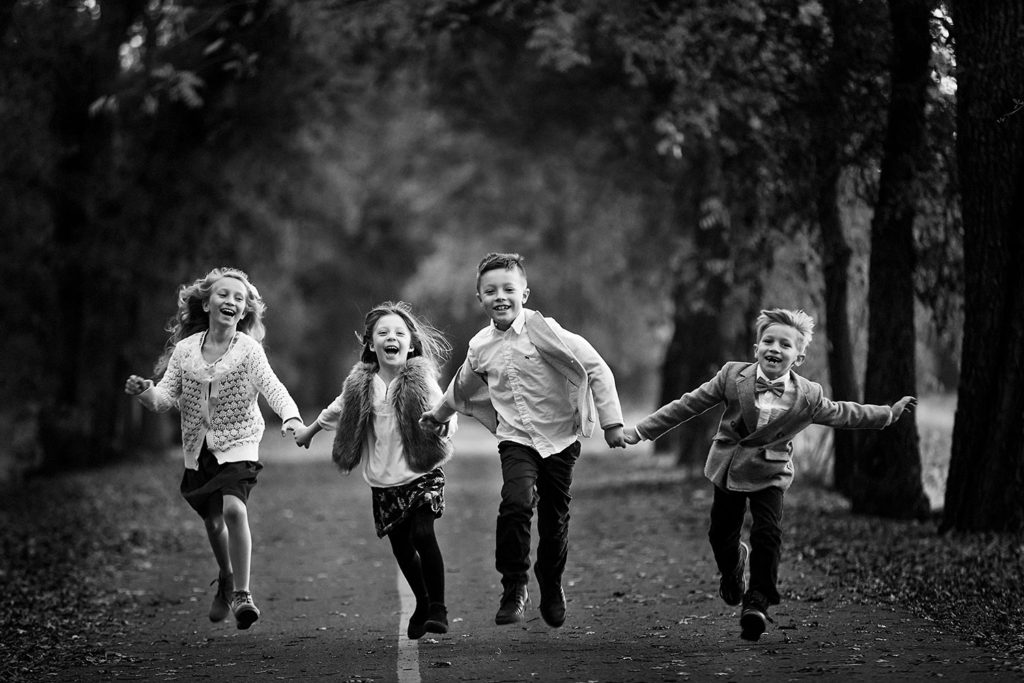
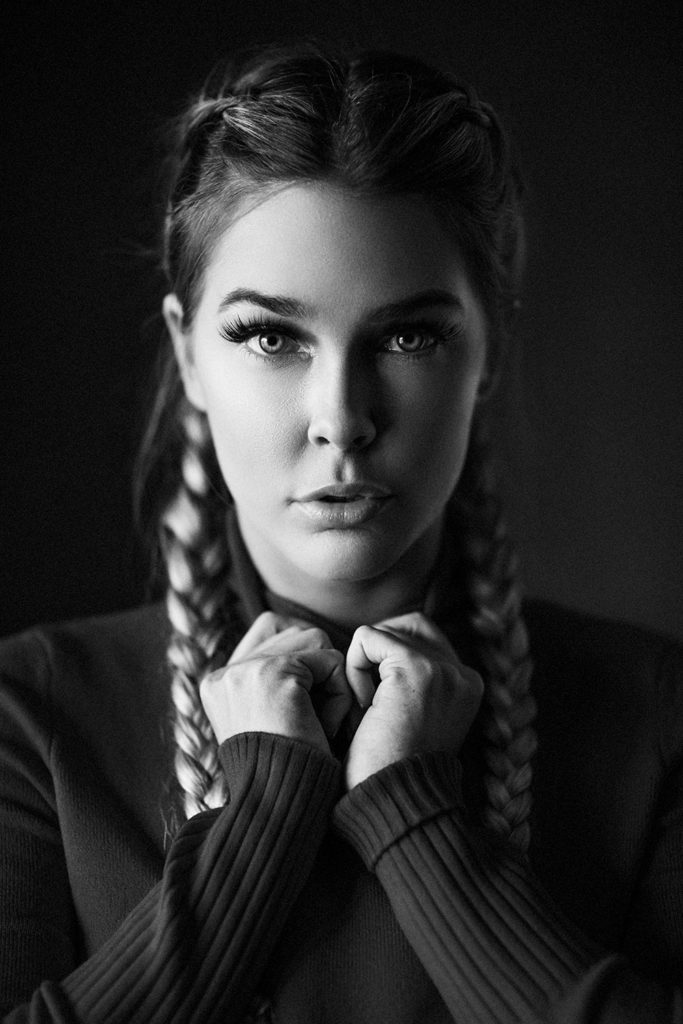
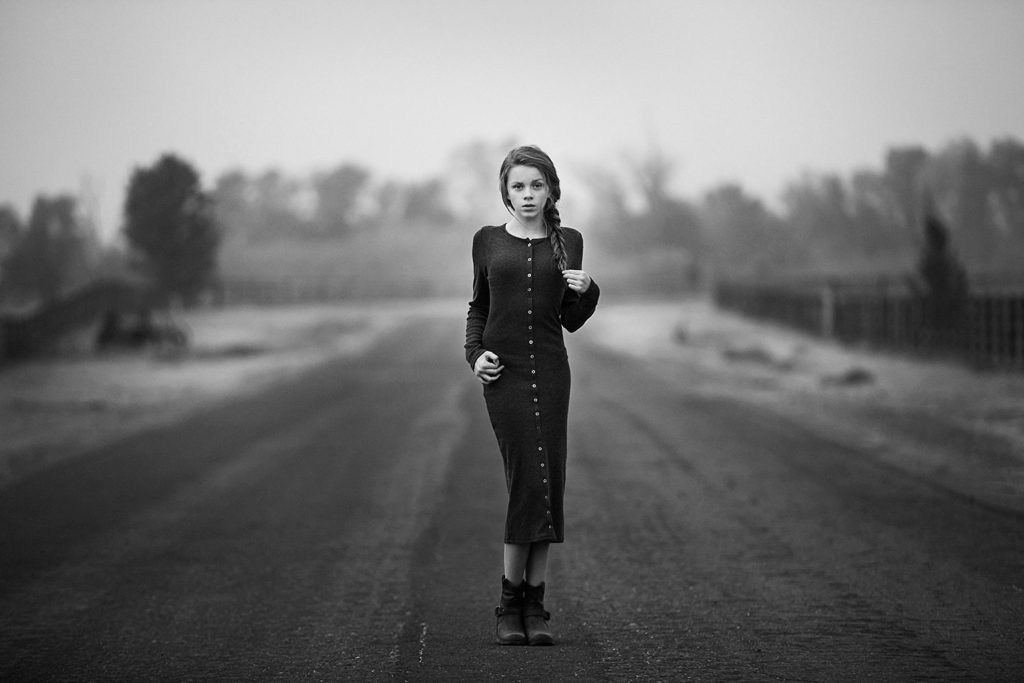
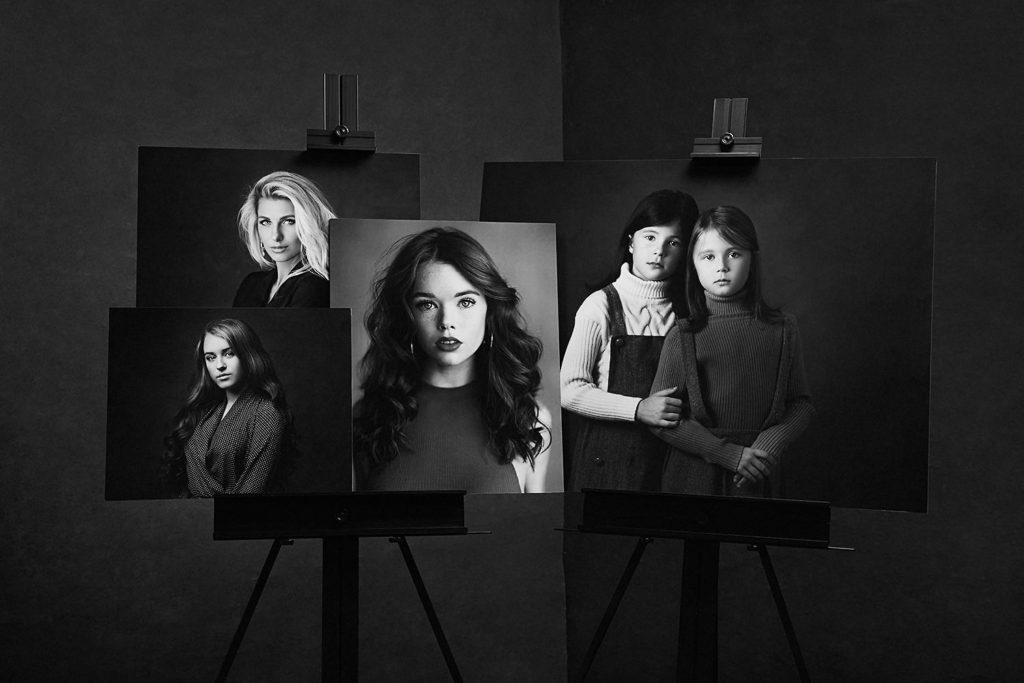
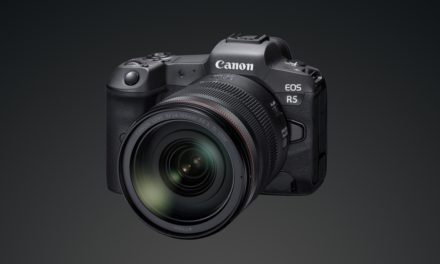
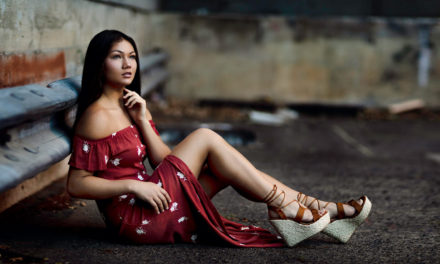
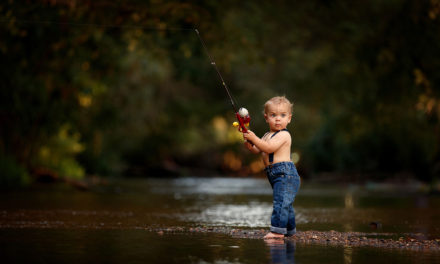
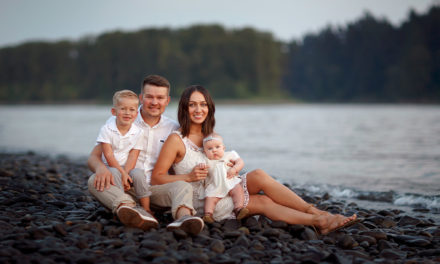
Thank you, for sharing a very helpful article. Do you have a YouTube channel?